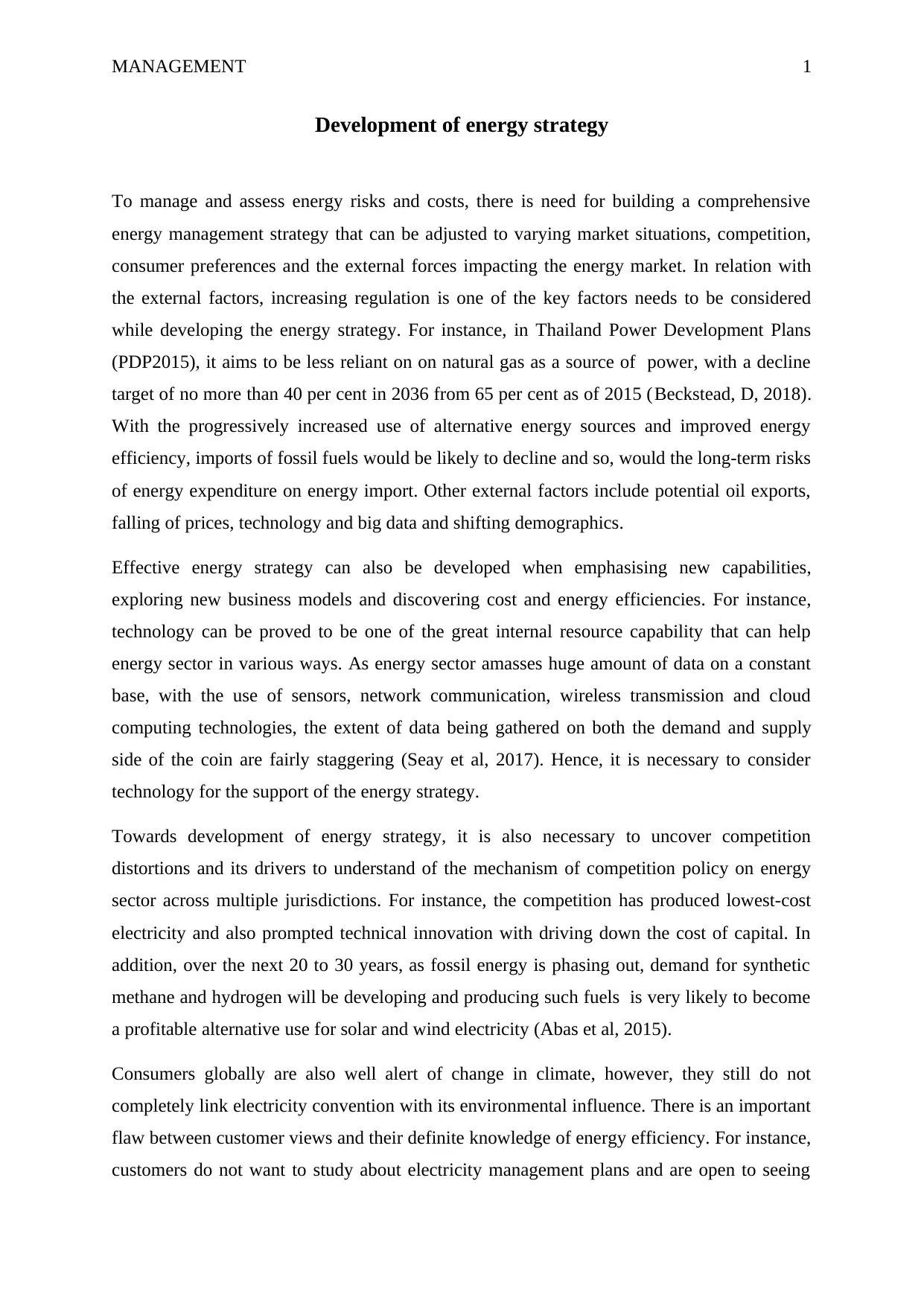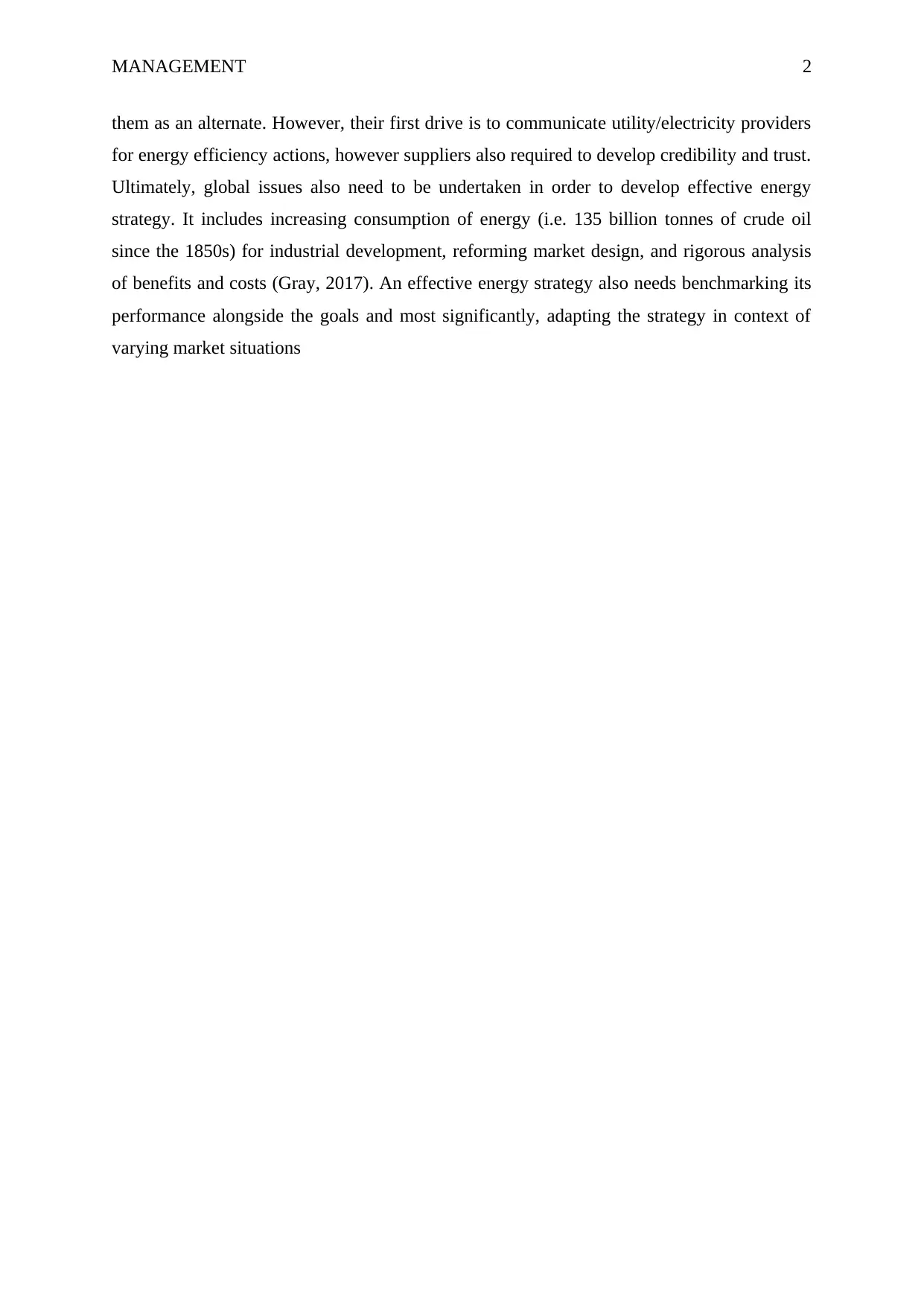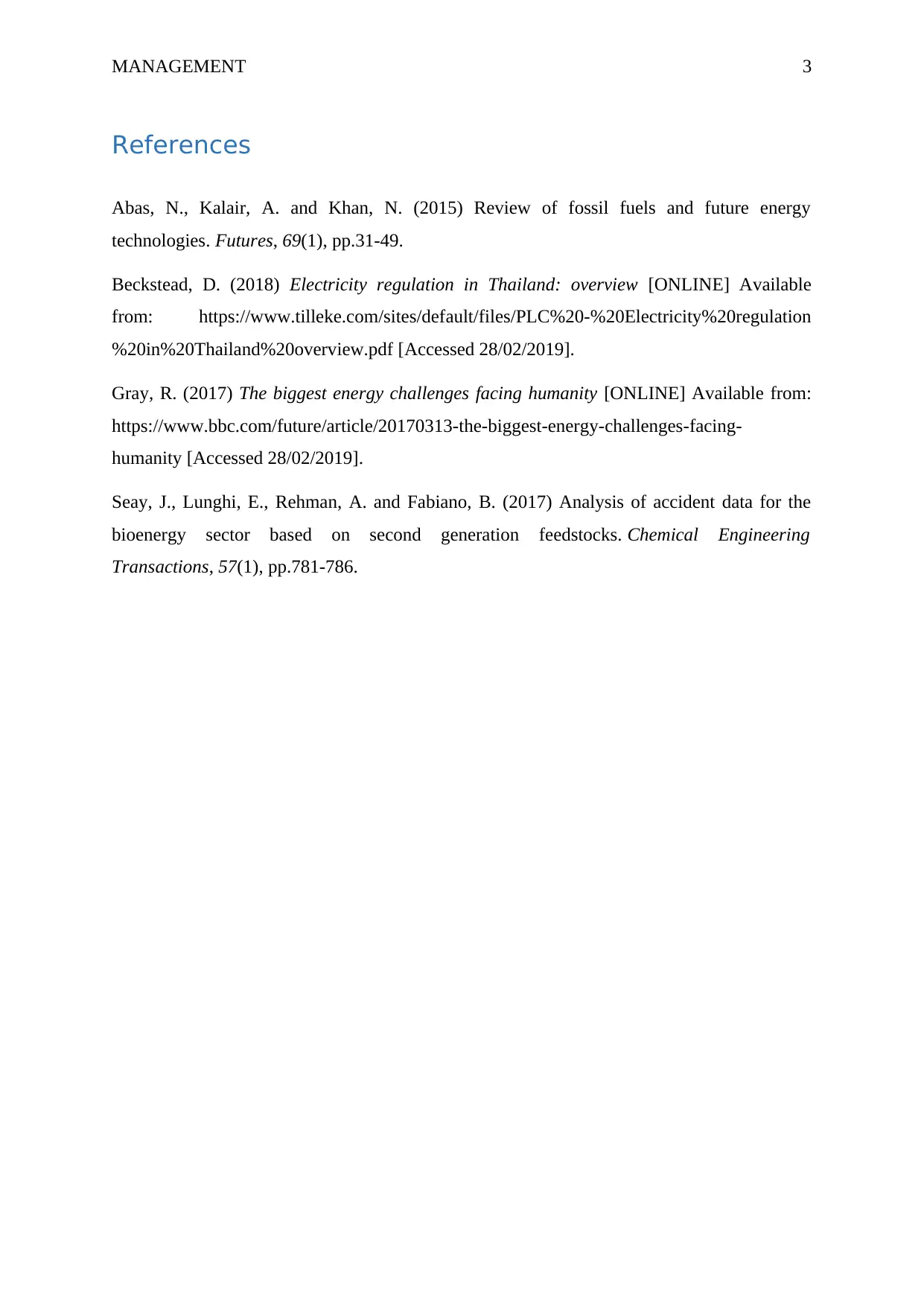University Energy Strategy Development Report - MGMT301
VerifiedAdded on 2022/08/19
|5
|736
|17
Report
AI Summary
This report provides a comprehensive analysis of the development of an energy strategy, addressing key considerations for energy companies. It emphasizes the importance of risk analysis, considering both internal and external factors impacting the energy market, such as regulations, technology, and competition. The report explores internal resource capabilities, including technology and data analytics, to support strategic goals. It also delves into the drivers of competition, consumer preferences, and global issues like increasing energy consumption and climate change. The analysis highlights the need for adapting strategies to varying market situations, benchmarking performance, and addressing challenges related to consumer awareness and market design. The report is supported by references to academic sources, providing a well-rounded perspective on energy management.
1 out of 5












![[object Object]](/_next/static/media/star-bottom.7253800d.svg)